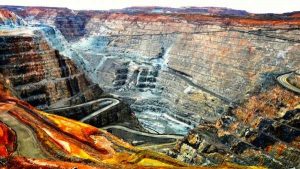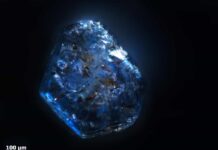
Kalgoorlie-Boulder’s famous Golden Mile and Super Pit has not only produced more than 50 million ounces of gold but it has now produced one more precious nugget in the form of a new mineral unique to Kalgoorlie-Boulder, called kalgoorlieite.
Kalgoorlieite was discovered by Curtin University’s Department of Applied Geology researcher Kirsten Rempel in January last year.
Dr Rempel was making detailed examinations of historic samples at the WA School of Mines’ Kalgoorlie campus when she found the mineral.
“I first found the mineral using a scanning electron microscope (SEM) which showed me the basic chemical composition of the mineral” Dr Rempel says.
“The spectra showed a combination of elements arsenic (As) and tellurium (Te) which had never been reported before, so that was when I began to think this was something new.”
A further test using a more advanced SEM in the John de Laeter Centre in Perth verified the composition.
“The chemistry needed to declare a new mineral is very detailed,” Dr Rempel says.
“So I took kalgoorlieite to an electron microprobe at UWA and got the composition further analysed down to fractions of a per cent, and found traces of gold, silver and other metals.”
She then had to detect kalgoorlieite’s structure using a technique called Kikuchi diffraction and by comparing it with an already known synthetic compound with the same structure currently used in thermoelectric applications, she was able to match and confirm a formula for kalgoorlieite, As2Te3.
The final step before submission was to determine how much light kalgoorlieite reflects.
“We couldn’t measure this in Australia so it had to be done at the Natural History Museum in London,” Dr Rempel says.
Kalgoorlieite was added to the International Mineralogical Association’s list of known minerals at the end of March.
“You’re not allowed to name the mineral after yourself so I called it kalgoorlieite,” she says.
“This mineral could provide important information about the widely contested genesis of the Golden Mile.”
Kalgoorlieite’s simple composition and the fact that it has a limited stability in terms of pressure, temperature and chemistry of its surroundings gives more precise constraints on the conditions under which the Golden Mile deposit was formed.
It’s unlikely that natural kalgoorlieite will have any commercial value because of it’s rarity and a synthetic compound has been produced for several years for thermoelectric applications.
Note: The above post is reprinted from materials provided by Science Network WA.
This article first appeared on ScienceNetwork Western Australia a science news website based at Scitech.










